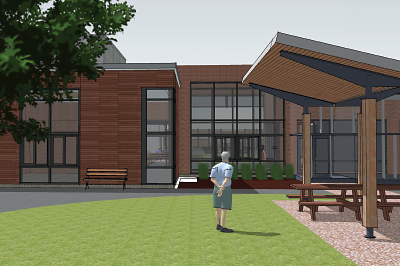Vermont is getting a new state psychiatric system, courtesy of Tropical Storm Irene.
Irene struck in August 2011, flooding the Vermont State Hospital in Waterbury. Patients were quickly and safely evacuated to other facilities, but the hospital was rendered unusable (Psychiatric News, October 11, 2011).
“Irene closed the hospital, and since then we have not had enough psychiatric beds,” said Margaret Bolton, M.D., president of the Vermont Psychiatric Association (VPA), in an interview. In the absence of the state hospital, emergency-room boarding of patients needing psychiatric help often ran from 48 hours to five days.
In January, however, the state got word of a combined $30 million in insurance payments and funding from the Federal Emergency Management Agency (FEMA) to support construction of a new $28 million hospital in Berlin, adjacent to the Central Vermont Medical Center. (Payment was delayed for a while when FEMA officials first argued that the old hospital was merely “damaged” but not “destroyed.”) Another $12 million to $15 million in state funds will help pay for the new hospital and four smaller facilities.
An eight-bed acute-care center has already opened in Morrisville in a remodeled nursing home. A seven-bed secure residential unit is nearing completion in Middlesex, as is a 14-bed unit at the private Brattleboro Retreat. Six more beds are scheduled to open at the Rutland Regional Medical Center in April or May.
The new hospital in Berlin (as yet unnamed) is being designed for a high level of acuity and relatively shorter lengths of stay, its architect, Frank Pitts, F.A.I.A., president of Architecture+ in Troy, N.Y., told Psychiatric News.
He cited several design details intended to make spaces friendly as well as safe. Each patient room has two windows, one next to the bed and one by the built-in desk, so that patients can sit where they like and still have a view outside.
The windows, which Pitts first saw in Great Britain, slide open to permit natural ventilation, reduce heating and air conditioning costs, and increase sustainability.
“For patient safety, the open area of the window is covered with a sheet of perforated stainless steel, which looks like a screen but is much stronger,” said Pitts. The two windows are surrounded on the outer wall by a single border, which helps make the building appear less massive.
The hospital will have two courtyards: a public one for patients and visitors with a labyrinth and water features, and a second for inpatients with one side bordered by a security fence but open to a view of the surrounding woods.
Irene also had an effect on Vermont’s psychiatrists, as well as its psychiatric facilities, said Bolton.
“Before the storm, members of the VPA were divided,” she said. Some wanted to see an expansion of a distributed system, with smaller inpatient units scattered across the state, a plan advanced by Gov. Peter Shumlin’s administration that is now taking shape. Others backed continued reliance on a more centralized approach, supporting their colleagues employed at the old state hospital.
“But since Irene, there is now general support for beefing up community mental health services and for the governor’s proposal for a single-payer health insurance system,” she said. ■

